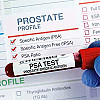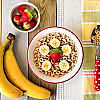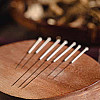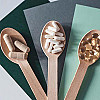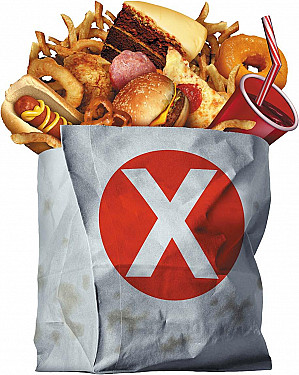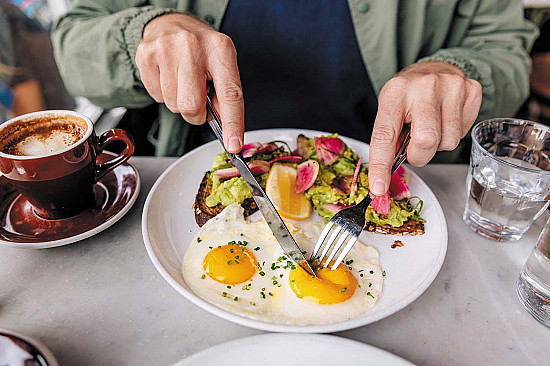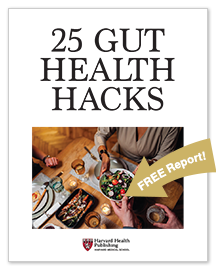Chickpeas: Easy ways to eat more of this nutritious legume
- Reviewed by Teresa Fung, MS, RD, ScD, Contributor; Editorial Advisory Board Member, Harvard Health Publishing

If you've ever swirled a crudité through a creamy, garlicky bowl of hummus, or topped a salad with crunchy roasted chickpeas, you've tapped into the goodness of garbanzo beans.
But even if you're new to eating legumes, chickpeas can be an easy and nutritious addition to your diet.
What are chickpeas?
A member of the Fabaceae (or pea) family, chickpeas are the edible fruits produced by the Cicer arietinum plant. Small, round, and usually beige-colored, chickpeas — or garbanzo beans — are a rich source of vitamins, minerals, plant protein, and fiber.
Are chickpeas good for you?
Chickpeas provide 14.5 grams of plant-based protein per cup (cooked), making them a good choice for people looking to get more protein in their diets without eating more meat. They also provide 12.5 grams of dietary fiber per cup, which aids digestion, helps maintain a healthy gut microbiome, and can help keep you feeling fuller for longer after eating. Plus, they're relatively low in calories and contain 4 grams of fat (a mix of healthy monounsaturated and polyunsaturated) per cup. And, because they're low on the glycemic index, unlike refined carbohydrates, eating them will not cause blood sugar levels to spike.
Chickpeas provide a variety of vitamins and minerals. They're an excellent source of the mineral manganese (important for your brain and nervous system) and the B vitamin folate (important for cell growth), as well as copper, iron, zinc, and phosphorus. Chickpeas are high in vitamins A, E, and C, and a good source of, thiamine, vitamin B6, and selenium. They're also a good source of potassium and magnesium — both of which can help support cardiovascular health by helping prevent high blood pressure. Additionally, garbanzo beans are naturally cholesterol-free and low in sodium, while being rich in heart-healthy polyunsaturated fats.
Ideas for adding chickpeas to your diet
You can enjoy chickpeas straight out of the can (rinse them first to remove excess sodium), on salads or added to soups and stews, where they can replace some or all of the meat called for in many recipes. Dip vegetables in hummus — a dip made from chickpeas, garlic, lemon juice, olive oil, and tahini (sesame-seed paste). Keep an eye on portion size when enjoying hummus, since the calories from olive oil and tahini can add up, and check sodium levels on store-bought hummus. You can also swap the chicken or lamb in your gyro for falafel (made from chickpeas, herbs, and spices).
If you lean towards DIY, it's easy (and cheaper) to buy dried chickpeas and cook them at home. Just be sure to leave yourself some time; many popular cooking methods call for soaking the dried beans in water overnight before cooking. (Or cook them ahead of time and store them in the freezer for a quick and healthy protein source you can reach for anytime.)
You can also explore chickpea flour, a good stand-in for gluten-containing flours. Chickpea flour is slightly more dense than all-purpose flour and absorbs more moisture — so it's not quite a 1:1 substitution for all-purpose flour, but there are many recipes online to help you make the swap. Or simply buy pasta made with chickpea flour rather than white or whole-wheat; it tends to be higher in protein and fiber than traditional pasta, with a pleasantly nutty taste.
Easy chickpea recipes
The following recipes will work with canned chickpeas or dried chickpeas you've cooked yourself.
- Combine chickpeas with a squeeze of lemon, a drizzle of extra-virgin olive oil, and a pinch of flaky salt. Add to a salad or eat as is.
- Toss chickpeas with cucumber, tomato, red onion, feta, olives, lettuce, and Greek dressing.
- Make roasted chickpeas by patting beans dry, then tossing with extra virgin olive oil, salt, pepper, and your favorite spices. Spread in a single layer on a cookie sheet and roast for about 45 minutes at 350°. Eat as a snack or use to top a salad.
- For the smoothest homemade hummus, boil a can of chickpeas with a pinch of baking soda for about 20 minutes. Then blend the chickpeas with 1/2 cup tahini, the juice from two small lemons, one large garlic clove, a large pinch of salt, and a drizzle of olive oil to make hummus. You may need to add up to 4 tablespoons of water to achieve the desired consistency. Drizzle with more olive oil and sprinkle with herbs or spices of your choice.
- Make curried chickpeas by heating canola oil in a heavy-bottomed pot, then adding sliced onion, minced garlic, and crushed red pepper. Cook until the onion is golden (about 10 minutes). Add curry powder and cumin and cook until fragrant, then add a can of crushed tomatoes. Add a can of coconut milk and two cans of chickpeas to the pot, reduce to low heat, and simmer for 10 minutes. Serve over brown rice.
- Blend together a large bunch of cilantro, equal parts fresh lime juice and olive oil (about 1/4 cup each), one large clove garlic, 2 teaspoons mustard, and 2 teaspoons sugar, plus a pinch of salt and pepper. Toss dressing with 1 cup minced red onion and 3 cups cooked and cooled chickpeas.
About the Author

Lindsay Warner, Content Licensing Editor, Harvard Health Publishing
About the Reviewer

Teresa Fung, MS, RD, ScD, Contributor; Editorial Advisory Board Member, Harvard Health Publishing
Disclaimer:
As a service to our readers, Harvard Health Publishing provides access to our library of archived content. Please note the date of last review or update on all articles.
No content on this site, regardless of date, should ever be used as a substitute for direct medical advice from your doctor or other qualified clinician.


